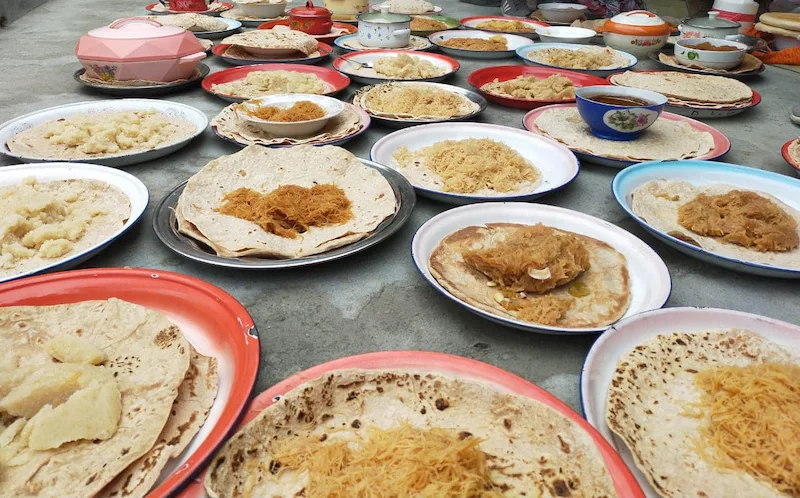The Hunza Valley is not just a traveler’s paradise for its snow-capped peaks and turquoise rivers, it’s also a culinary gem that has been quietly nourishing one of the world’s healthiest communities for centuries.
Hunza traditional food reflects the region’s harmony with nature, offering simple yet nutrient-rich meals that have fueled generations of long-living Hunzakuts.
From stone-milled grains to sun-dried apricots and dishes enriched with pure apricot kernel oil, every bite tells a story of resilience, heritage, and connection to the land.
In this 2025 guide, you will explore the top 10 most famous traditional foods Hunza valley, its fascinating history, uncover its signature dishes, share famous Hunza food recipes, and even outline a traditional diet plan.
What Makes Hunza Traditional Food Unique?
Hunza traditional food is a reflection of the region’s unique geography, culture, and lifestyle. Hunza Valley benefits from crystal-clear glacier water, fertile terraced fields, and a climate that supports organic, high-altitude farming.
The people follow a naturally healthy lifestyle, consuming fresh, unprocessed, and seasonal foods, often grown in their own orchards and farms.
Preservation techniques, such as sun-drying apricots and storing butter for winter, ensure year-round nourishment.
Beyond sustenance, food plays a central role in Hunza’s festivals, hospitality, and cultural identity, each dish carrying generations of tradition and wisdom.
Key Features of Hunza Traditional Food:
- High-altitude farming with fertile soil and clean mountain air.
- Glacier-fed irrigation ensures mineral-rich crops.
- Organic and unprocessed ingredients, free from chemicals.
- Self-sufficiency through homegrown fruits, vegetables, and grains.
- Seasonal eating habits for maximum freshness and nutrition.
- Traditional preservation methods like drying apricots and storing butter.
Top 10 Famous Hunza Traditional Foods
Hunza’s food culture is a fascinating blend of nourishment, tradition, and flavor, shaped by its high-altitude environment and centuries-old cooking practices.
Below is a complete guide to the most beloved Hunza dishes, from hearty winter staples to light, aromatic teas.
1. Chapshuro – The Hunza “Meat Pie” of the Mountains
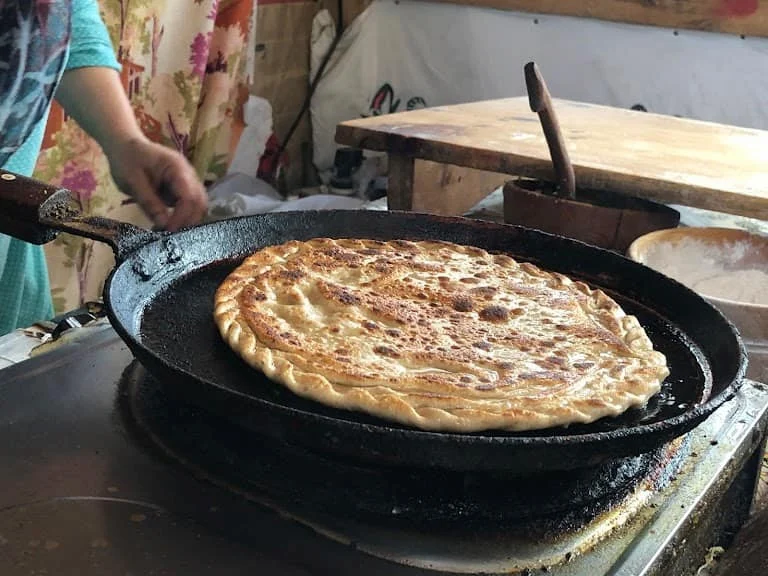
Chapshuro is often called the “Pizza of Hunza,” but in reality, it’s much older and more deeply tied to local tradition. Originating in the rugged villages of Central Hunza, it is a celebratory dish prepared during winter festivals, weddings, and community gatherings.
What Goes Inside the Golden Dough?
- Minced goat or yak meat (sometimes lamb)
- Onions, tomatoes, and green chilies
- Spices unique to the valley
- A light brushing of apricot oil for flavor and crispiness
The dough is hand-kneaded from stone-ground wheat, filled with the seasoned meat mixture, and cooked on a hot griddle until golden and crisp.
When It’s Served?
Chapshuro is best enjoyed during cold evenings, especially in winter, when its warmth and aroma fill the air during gatherings.
2. Molida – Comfort Food in Its Purest Form

Molida is the Hunza version of a warm hug, a dish that combines the richness of wheat bread, the creaminess of local cheese, and the unique flavor of apricot oil.
It’s particularly loved in the Gojal region but is equally cherished across the valley.
How It’s Made?
- Freshly baked flatbread is shredded into small pieces
- Mixed with melted local cheese
- Drizzled generously with warm apricot oil
When It’s Enjoyed?
Molida is often made for honored guests or special family occasions. Its high-calorie content makes it ideal for the harsh winters, providing long-lasting warmth and energy.
Nutrition Note: Rich in healthy fats, calcium, and fiber, it’s a perfect balance of taste and sustenance.
3. Giyaling / Golay – The Stretchy Mountain Bread
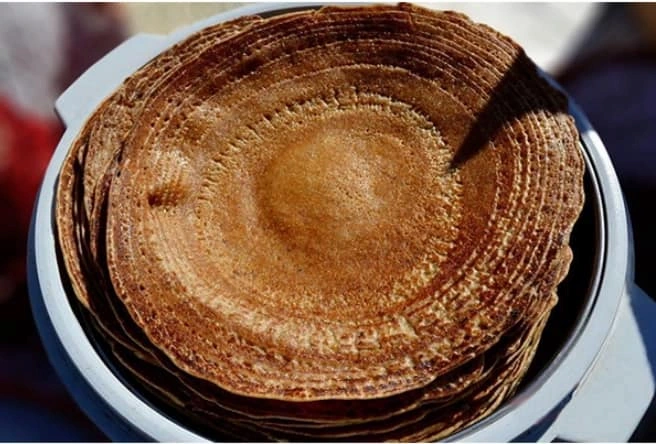
Giyaling (or Golay) is a thin, soft wheat bread that’s lightly fried in apricot oil, giving it a subtle aroma and delightful chewiness.
Serving Tradition
It’s usually stacked in multiple layers, served with local butter or more apricot oil. In Hunza, breakfast isn’t complete without Giyaling, especially in farming households where energy-packed meals are essential for long days in the fields.
4. Diram Phitti – The Sweet Wheat Bread of Hunza
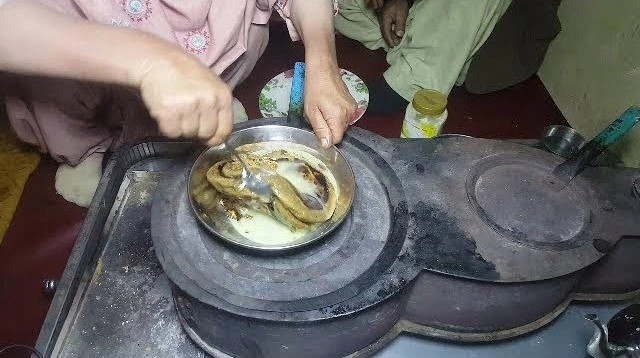
Diram Phitti is a beloved traditional bread in Hunza, cherished for its naturally sweet and nutty flavor, which comes from using sprouted wheat flour.
This sprouting process enhances the nutritional value and imparts a subtle sweetness that sets Diram Phitti apart from regular bread.
What Makes Diram Phitti Special?
- Made from sprouted wheat, carefully ground into flour, which boosts digestibility and vitamins.
- The dough is hand-prepared and traditionally baked in a clay oven (tandoor) or on a griddle (tawa).
- Often served warm, accompanied by generous dollops of local butter, fresh milk, or rich walnut oil.
When & Why It’s Eaten?
Diram Phitti is primarily a winter breakfast staple in Hunza households, providing essential warmth and sustained energy during the cold mountain mornings.
The combination of wholesome sprouted wheat and fat-rich accompaniments makes it ideal for starting a day full of outdoor work or trekking.
5. Harissa – The Hearty Winter Meat and Wheat Porridge

Harissa is a traditional Hunza dish revered for its nourishing and energy-packed qualities, especially during the harsh winter months.
What Goes Into Harissa?
- Locally sourced meat, typically lamb or goat, which is cut into small pieces or shredded.
- Cracked wheat (also called bulgur or coarse wheat) that provides fiber and texture.
- Animal fat (often from the meat itself), which adds richness and sustains warmth in the cold climate.
How It’s Prepared?
Harissa is traditionally cooked overnight in a large pot over low heat, allowing the meat to break down and meld with the wheat into a thick, porridge-like consistency.
This slow cooking method ensures deep flavor and tenderness, making it a communal dish often prepared for family gatherings, religious festivals, or weddings.
When It’s Served?
This hearty dish is a winter essential in Hunza, providing the body with long-lasting energy and warmth. It’s served hot and enjoyed with fresh bread or alongside simple vegetable sides.
The dish symbolizes community bonding, as it’s often shared among neighbors and relatives during celebrations.
6. Dowdo Soup – Hunza’s Winter Soul Warmer

Dowdo is not just food, it’s medicine for cold mountain nights. Made with handmade wheat noodles simmered in a rich broth of mutton or beef, it’s seasoned with generous amounts of garlic and sometimes wild herbs.
When It’s Served?
Traditionally eaten in winter, Dowdo is known for boosting immunity and keeping the body warm in sub-zero temperatures.
7. Tumoro Tea – Nature’s Healing Brew
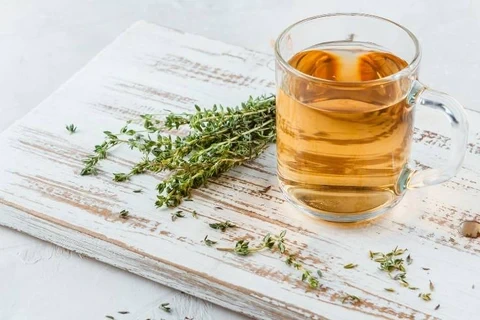
Tumoro tea is made from wild thyme (Tumoro plant) that grows naturally on Hunza’s slopes. Known for its calming aroma and digestive benefits, it’s a drink deeply embedded in daily life.
Health Benefits:
- Aids digestion
- Relieves colds and congestion
- Provides antioxidants
Cultural Note: Tumoro tea is often served to guests as a sign of warmth and welcome.
8. Shopan – The Nourishing Meat and Vegetable Stew
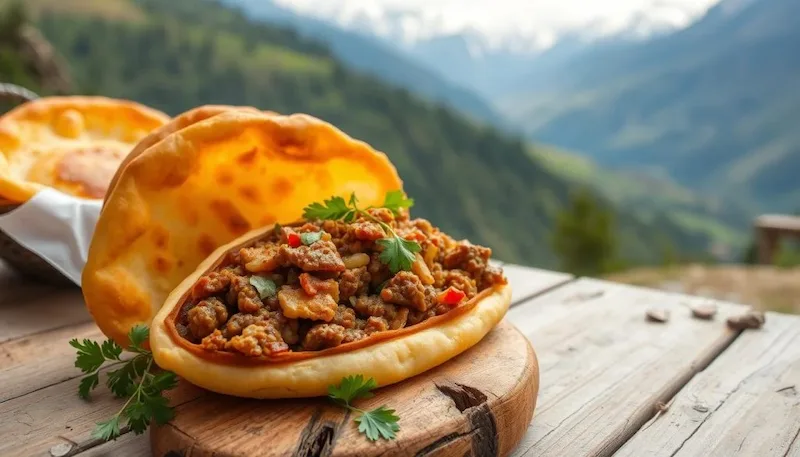
Shopan is a wholesome Hunza stew that combines locally grown vegetables with tender meat, creating a comforting and healthful dish especially suited for the colder months.
Core Ingredients of Shopan
- Fresh root vegetables such as turnips, carrots, and potatoes, harvested from high-altitude farms.
- Chunks of lamb or goat meat, slow-cooked to absorb the flavors of the broth.
- Mild herbs and seasonings, allowing the natural tastes of meat and vegetables to shine without overwhelming the palate.
Preparation & Flavor Profile
Shopan is simmered gently over several hours, resulting in a light yet flavorful broth that is both nourishing and easy on the stomach. Unlike heavily spiced stews, Shopan’s simplicity highlights the freshness and quality of Hunza’s organic produce.
When It’s Enjoyed?
This stew is a popular choice during winter and early spring when fresh vegetables are in season but the climate remains chilly. It is often served at family meals and gatherings, providing warmth and sustenance.
9. Apricot Oil – The Golden Heart of Hunza Cuisine
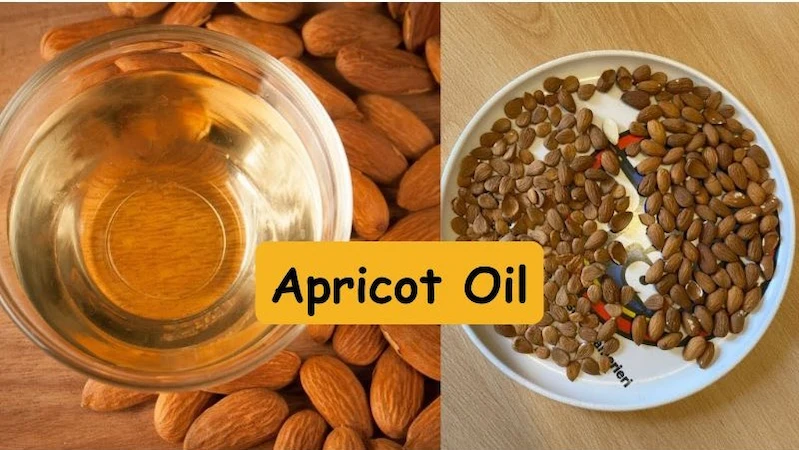
Apricot oil is perhaps the most iconic ingredient in Hunza food. Extracted by cold-pressing dried apricot kernels, it’s used in cooking, skincare, and even medicine. It has many health benefits as well.
How It’s Used in Food
- Drizzled over breads like Giyaling
- Used in frying Chapshuro
- Mixed into Molida for richness
Why It’s Important?
Apricot oil is high in healthy fats, vitamin E, and antioxidants, making it a cornerstone of the Hunza diet and possibly a contributor to the community’s famed longevity.
10. Baghar Khani – The Hunza Biscuit with a Crunch
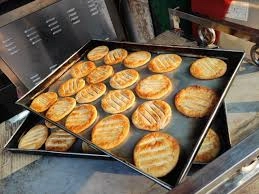
Baghar Khani is a crisp, flaky biscuit found in small bakeries of Karimabad and Aliabad. Made from wheat flour and ghee (clarified butter), it has a buttery aroma that pairs perfectly with tea.
Best Time to Enjoy
Morning tea sessions, market strolls, or as a quick snack for travelers exploring Hunza’s streets.
Hunza Famous Food Places & Where to Eat?
Hunza offers an authentic culinary experience through its local eateries and markets, perfect for tasting traditional Hunza dishes amidst stunning mountain views.
Karimabad – The Heart of Hunza’s Food Scene
In Karimabad, top spots like Café de Hunza, Hunza Food Pavilion, and Hunza Delight Restaurant serve classics like Chapshuro, Molida, and Tumoro tea in cozy, scenic settings
Aliabad – A Food Lover’s Stopover
Aliabad features family-run places such as Hunza Inn Restaurant and Mountain Story Café, known for hearty breakfasts and fresh apricot-based dishes made with organic, local ingredients.
Passu & Gojal – Authentic Flavors in the Upper Hunza
Passu and Gojal boast small tea houses offering freshly fried Chapshuro and traditional Tumoro herbal tea, where you can enjoy genuine local flavors while mingling with residents.
Don’t miss the local markets for pure apricot oil, fresh and dried walnuts, and dried apricots, key ingredients central to Hunza cuisine and great souvenirs to take home.
While exploring food spots, you can also discover the best hotels in Hunza Valley for a complete travel experience.
The Hunza Diet Plan: Myths & Facts
The Hunza diet is famous for its connection to the locals’ reputed longevity and good health. While stories of people living beyond 100 years are often exaggerated, their diet, based on fresh, organic, and seasonal foods, plays a big role in their overall well-being.
Typical Meals
Hunza daily meals are simple but nutritious:
- Breakfast: Sweet sprouted wheat bread (Diram Phitti) with milk or walnut oil.
- Lunch: Meat-filled flatbread (Chapshuro) or shredded bread with cheese (Molida).
- Dinner: Light stews like Shopan or slow-cooked Harissa porridge.
Snacking on dried apricots and walnuts provides extra nutrients.
Nutritional Benefits
Their diet is high in fiber, antioxidants, and healthy fats, with minimal processed foods. Herbal teas and wild plants add anti-inflammatory properties, promoting heart health and stable blood sugar levels.
Separating Fact from Myth
Scientific studies support that the Hunza diet contributes to better health, but longevity also depends on genetics and lifestyle.
How to Adopt the Hunza Diet?
At home, focus on whole wheat, nuts, apricot or olive oil, seasonal produce, simple cooking, and herbal teas. This approach helps bring Hunza’s healthy eating traditions to your table in an easy, balanced way.
Best Seasonal Foods of Hunza Valley
Hunza’s food culture is deeply connected to its seasons, making each time of year unique for culinary travelers.
Spring (Apricot Blossom Season): As apricot trees bloom, fresh greens and wild herbs become plentiful. Herbal teas like Tumoro are freshly brewed, offering fragrant and healthful sips.
Summer: This is the best time for juicy local fruits such as cherries, apples, and apricots. Light salads and fresh vegetables are enjoyed, making meals refreshing and vibrant.
Autumn: The walnut harvest begins, and locals prepare dried fruits to last through winter. Hearty soups and stews warm up chilly days, perfect for experiencing traditional flavors.
Winter: With fresh produce scarce, preserved foods take center stage. Chapshuro (meat-filled flatbread) and Dowdo soup become staple comfort dishes, nourishing the body against cold mountain weather.
Here are seasonal trip you can book with us to explore hunza and more
Hunza Cherry Blossom Tour
Hunza Valley Autumn Tour
Pakistan Spring Blossom Tour
Pakistan Winter Tour Package
Conclusion:
Hunza’s unique food culture offers a delicious blend of tradition and natural flavors, from iconic dishes like Chapshuro to refreshing apricot oil and herbal teas.
Whether you try street food or home-cooked meals, each bite tells a story of the valley’s rich heritage.
Plan your visit to experience seasonal specialties and pair your culinary journey with the best hotels and travel tips for an unforgettable Hunza adventure.
FAQs About Hunza Traditional Foods
What is Hunza’s most famous dish?
The most famous dish is Chapshuro, a meat-filled flatbread often enjoyed during festivals and special occasions.
Is Hunza food healthy?
Yes, Hunza cuisine is known for its organic ingredients, use of apricot oil, fresh produce, and minimal processed foods, making it very healthy.
Where can I try Hunza traditional food in Pakistan outside Hunza?
You can find authentic Hunza dishes in major cities like Islamabad, Gilgit, and Karachi at specialty restaurants serving northern Pakistani cuisine.
Which Hunza dishes are vegetarian?
Vegetarian options include Giyaling (thin wheat bread), Tumoro tea, and various vegetable stews like Shopan.
What ingredients are commonly used in Hunza cuisine?
Key ingredients include locally grown wheat, apricot oil, fresh fruits, dried nuts, mutton, and mountain herbs.
How is apricot oil used in Hunza food?
Apricot oil is a staple cooking oil used for frying, flavoring breads, and drizzling over dishes for a distinct, rich taste.
Are Hunza food recipes easy to make at home?
Many recipes like Chapshuro and Dowdo soup are simple but require specific local ingredients for authenticity.
What are some traditional Hunza snacks?
Popular snacks include Baghar Khani (flaky biscuits), walnut cakes, and dried apricots.
Does Hunza food contribute to longevity?
The Hunza diet is rich in fiber, antioxidants, and healthy fats, which some studies link to their reputed long lifespan.
When is the best time to visit Hunza for food lovers?
The best seasons are spring and autumn, when fresh apricots, herbs, dried fruits, and traditional dishes are at their peak.


